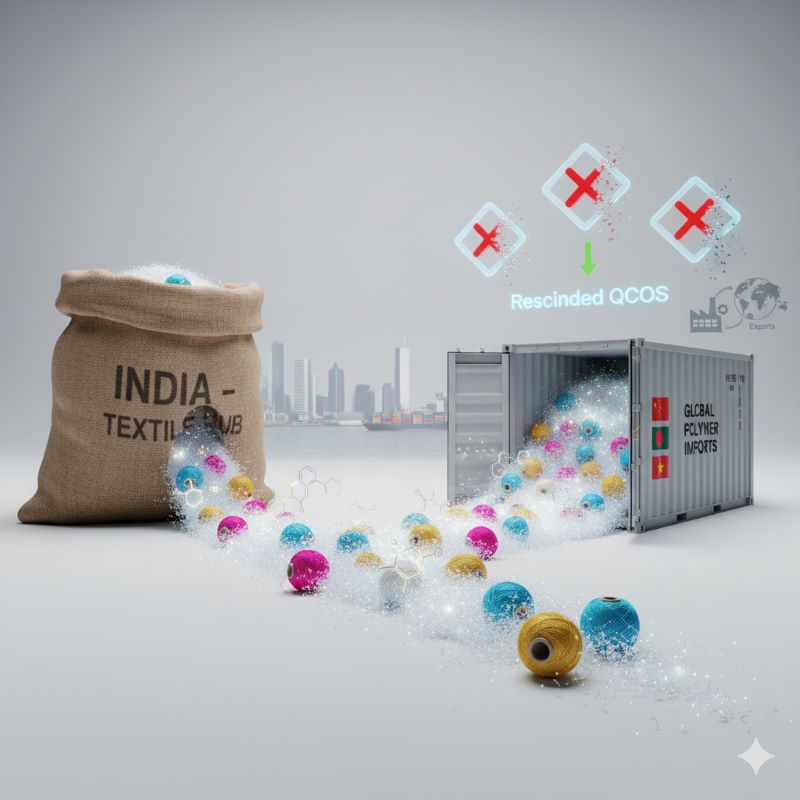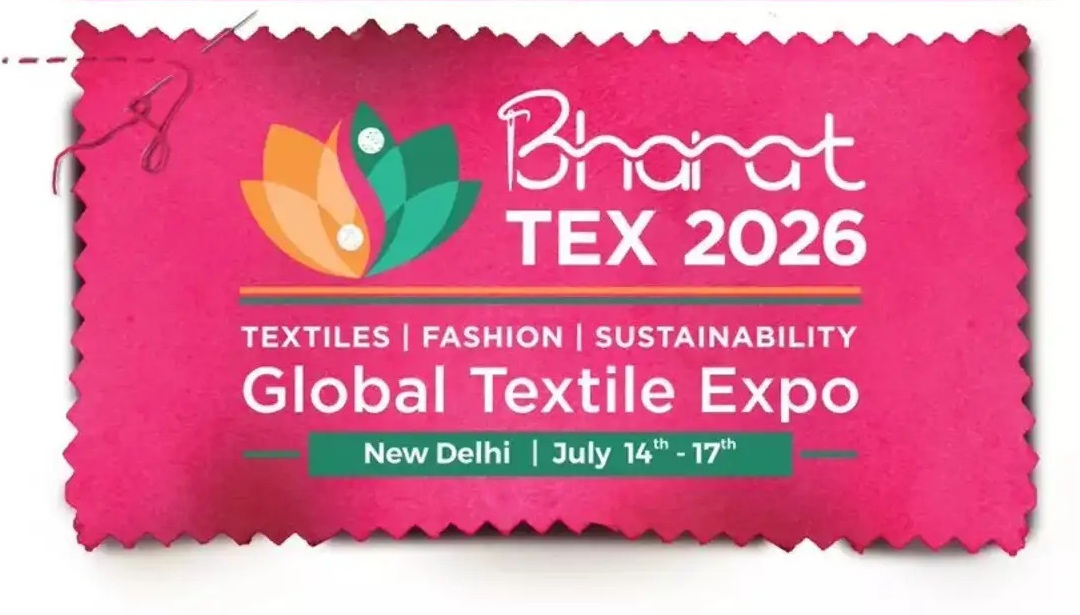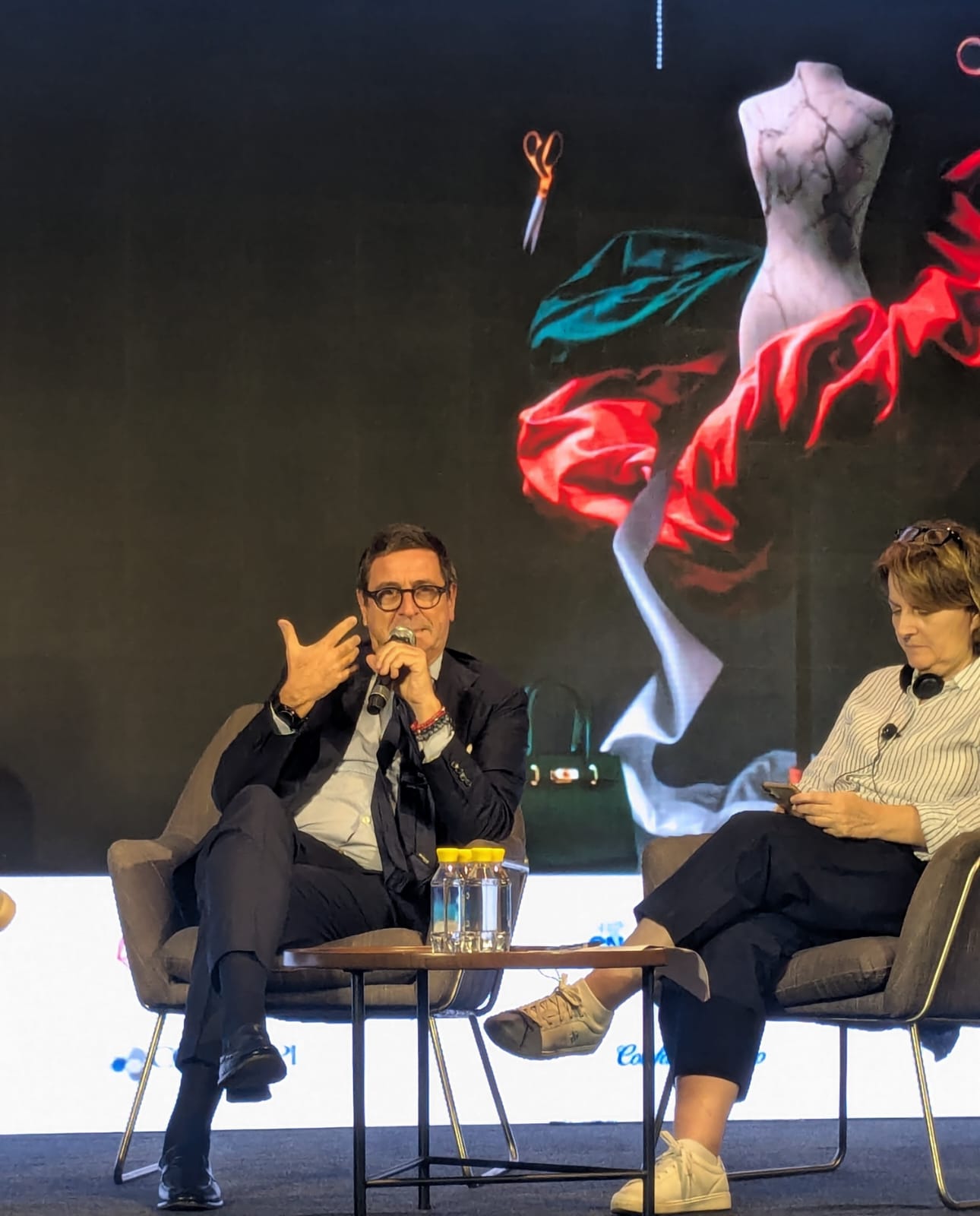FW
An apex body of the textile industry, Indian Texpreneurs Federation (ITF) has suggested the Centre to remove the hank yarn obligation.
It gave suggestions in a letter to Prime Minister Narendra Modi, as part of ease of doing business in the textile industry and said there was excess production of hank yarn due to a rise in spindlage. However, consumption had come down drastically due to growth of the power loom sector.
D Prabhu, ITF secretary said mills have to produce 40 per cent of the total production as hank yarn for supplying to the handloom sector. He said that the Textile Ministry has appointed an expert committee to study this, however, the report has not been released and its continuation would lead to enormous corruption.
Prabhu added that though Textile Commissionerate has released Expression of Interest from audit firms to clear the arrears, nothing has taken off and the matter has gone into cold storage again as there was delay in disbursement of Technology Upgradation Fund subsidy worth crores. Indian blended textile products are not competitive in world markets due to high excise and import duty.
The products would become competitive with international prices with rationalisation of duty, which would help push demand, since man-made fibre cotton blended products are growing exponentially in India and abroad, said Prabhu. Besides, ITF said that that there was an urgent need for textile-focused Free Trade Agreements with existing and emerging markets.
In the Goods and Service Tax (GST), it wanted the government to accommodate textile in the lower slab of taxation, which would transform the economy and provide exceptional growth.
www.itf.org.in
India’s exports are not expected to be hit in a major way by the TPP pact signed between the 12 Pacific Rim countries. Estimates are that India will face an export loss of not more than 0.3 per cent. TPP is a regional trading arrangement between the US, Japan, Canada, Australia, New Zealand, Singapore, Malaysia, Vietnam, Brunei, Peru, Chile and Vietnam.
The pact, yet to be ratified by each country, will result in the largest trading bloc with zero or low tariffs on most goods, easier investment norms and services flow but tougher IP rules and laws to protect corporate interests.
Had India joined the TPP, there would have been negative fall-outs. The intellectual property rules would have led to an increase in the number of off-patent drugs and sent prices of essential drugs soaring while the investor-state dispute rules would have infringed on the country’s policy space.
While some products from India, such as textiles and yarns, may face issues in markets like Vietnam because of rules in the TPP mandating use of local inputs by members to be eligible for zero tariffs for final products, for most other products Indian products are not likely to experience preference erosion because of the country’s trade pacts with individual members of the group.
Ustr.gov/tpp
Following a recent reports by Clean Clothes Campaign on H&M's failure to meet its commitments under the Bangladesh Accord, Clean Clothes Campaign, International Labor Rights Forum, Maquila Solidarity Network, and Worker Rights Consortium have issued a joint memo analyzing H&M's false and misleading claims in reaction to the said report.
The memo states that H&M's response is replete with false and misleading statements, demonstrating that the company remains unwilling to address the issue in a serious and forthright manner. While H&M claims that it only sources clothes from factories approved by the Accord, according to the Accord's published reports, there is not a single H&M supplier factory in Bangladesh that meets the building safety standards of the Accord.
H&M also states, “All of our factories have emergency exits that is a requirement from our side. What has failed is that some factories have old doors that have not been changed to new fireproof doors that meet all requirements..." However, memo says that H&M's claim is an outright falsehood. “Should a major fire occur in an H&M supplier factory, requiring emergency evacuation, the lack of proper fire doors would lead to stairwells becoming inundated with smoke and thereby possibly rendered impassable for workers trying to escape the fire,” it states.
H&M says that factories where H&M is lead-brand, almost 60 per cent of the remediation work is completed and it sees good progress. However, memo says that it is crucial to bear in mind that most of these factories were inspected more than a year ago, which means that most of the required renovations had deadlines for completion that have long since expired. “By now, close to 100 per cent of hazards should have been corrected - not 50 per cent, or 60 per cent, or 70 per cent since any one of these uncorrected hazards could cause injury or death.
” Finally the memo concludes saying, given the number of lives that are at stake, it is appalling that H&M, two and a half years after the Rana Plaza collapse, and five years after 21 workers died in an H&M supplier factory, is blaming the absence of life-saving fire safety equipment in its supplier factories on logistical problems that could have been resolved in a matter of months.
www.hm.com
www.cleanclothes.org
Bangladesh’s garment exports to the US may be hit by the Trans-Pacific Partnership (TPP) treaty. TPP led by the US, is a trade agreement between 12 countries.
At present, Bangladesh pays 15.62 per cent duty for its garment exports to the US, whereas Vietnam pays 8.38 per cent. If the TPP is signed, garment exports from a country like Vietnam will enter the American market completely duty-free and Bangladesh will lose its competitiveness in the apparel trade. As of now the US is Bangladesh’s single largest garment export destination.
However, Bangladesh's garment exports to other TPP nations like Canada, Japan, New Zealand, Australia and Chile might not be hampered as it already enjoys zero-duty benefit to those countries.
The TPP is a comprehensive agreement that will open markets, set high-standard trade rules and address 21st-century issues in the global economy. In so doing, it will promote jobs and growth in the US and across the Asia Pacific region. If Bangladesh had been a strong player in raw material exports such as yarn, fabrics and fibers, it would have benefited slightly from the deal. The average tariff of Bangladesh is 55 per cent, which is too high for openness of the country's business. Traders say its tariff structure should be liberalised as some other countries have the opportunity to join the TPP in the near future.
Ustr.gov/tpp
Aditya Birla Group’s Birla Cellulose, is participating in Intertextile Shanghai Apparel Fabrics, from October 13-15, 2015 in Shanghai. The company is showcasing its Liva A/W 2016/17 collection along with two other group companies and six value chain partners. The company has a wide range of specialty manmade cellulose fibres (MMCF) in their basket such as Birla Viscose, Birla Modal, Birla Excel and Birla Spunshades.
Liva has made a niche for itself in the Indian domestic fashion space and foresees huge potential in the knitwear segment. Aditya Birla Yarns is displaying yarn innovations with unique blends and special features mainly leveraging viscose and Modal. Liva A/W 2016/17 has inspired two lines—Canvas and Gallery.
Art and craftsmanship is the focus of the Canvas collection, which is inspired by the art movement. The range tried to find out the new expressions of art using eco-sensitive materials. Fabrics in the collection include Liva Spunshade Mélanges which offer eco-friendly spun dyed fibre, unfading colours and uniformity, and fabrics made from Liva Modal Amicor, which offers antibacterial properties with lasting hygiene and fresh feel. The garment is treated as a canvas in the Gallery collection adding intricate details to it.
www.adityabirla.com
Pakistan Readymade Garments Manufacturers and Exporters Association (PRGMEA) got a new Chairman, Shaikh Mohammad Shafiq, who was elected unopposed. South zone (Sindh-Balochistan zone) Chairman, Irfan Ali was also elected unopposed for the year 2015/16.
This was announced at the general meeting held recently to elect new members of the Central Managing Committee (CMC) and Zonal Managing Committee. Irfan Ali and M Jawed Chinoy are the newly elected CMC members.
The elected Chairmen vowed to promote the association and take it to new heights while addressing the AGM. They thanked the members for reposing confidence in them to lead the committees. Sajid Shahnawaz, Arshad Aziz, Idress Shafiq, Amir Lakhani, Mohammad Owais, M Naqi Bari and M Jawed Chinoy are the elected zonal managing committee members.
In his report, Jawed Suleman, outgoing chairman (SZ) highlighted the achievements made during 2014/2015. He also expressed his hope about the new team. He hoped that the team will continue the great work in the best interest of the association and its members.
www.prgmea.org
Even though countries such as India and China have been projected as doing quite well when compared to other developed economies, the latest International Monetary Fund report has warned of a global slowdown of economic growth to 3.1 per cent.
Sandra Polaski, International Labour Organisation’s (ILO) Deputy Direction General (Policy) said that increasing wages through state intervention will help India protect its workers and also shield its economy from the ripple effects of slow growth globally, in this global context.
Polaski said that a few successful economies such as China’s growth during the last 15 years has been due to a hike in wages under government control, and providing social protection systems. However, she said, in India this is not the case and wages have been falling. She suggested that India should follow China’s example of boosting domestic demand by raising wages at home and not banking on export-led growth. She added that this is particularly so, as the export-led growth has become unsustainable as demand for goods is falling in rich countries since the global financial crisis.
Polaski also said that this would help India grow and warned that in the absence of such measures, the country’s growth prospects could slowdown in the long run. The Narendra Modi government’s labour reform policies, where measures are being taken to make it easy to hire and fire workers, with a focus on foreign investors likely to invest in the country under the ‘Make in India’ programme, said Polaski, would not guarantee better Foreign Direct Investment (FDI).
www.ilo.org
For its inaction to restrain increase in the numbers of default cases in the textile markets, the Federation of Gujarat Weavers Association (FOGWA) has taken a tough stand against Federation of Surat Textile Traders Association (FOSTTA).
If fly-by-night operators are not eliminated, FOGWA office-bearers have threatened to stop delivering grey fabrics. A textile trader had defaulted on Rs 10 crore payments to over 80 power loom weavers some days ago and hence the tough stand.
FOSTTA had set guidelines for renting shops to traders in the markets according to FOGWA office-bearers and as per those, the traders have to deposit Rs 500 in FOSTTA office and fill out their personal details. The fly-by-night operators were successful in cheating the weavers and disappearing despite this.
In over 160 textile markets located at Ring Road, Rs 40 crores worth of unfinished fabric manufactured by the weavers is dumped on a daily basis. In a year, about Rs 300 crores worth of defaults take place in the market.
Ashok Jirawala, President, FOGWA said that it was the responsibility of FOSTTA to ensure that the racket of the fly-by-night operators gets removed, to create a healthy business environment. If not, he said, the weavers will stop delivering grey fabrics for an indefinite period. Most of the weavers are dealing through the agents, who are working in the industry for many years.
FOGWA plans to approach the state government to demand some guidelines to be issued to the police in tackling the economic offences being reported in the textile markets, added Jirawala. He also believes that the defaults are also due to FOSTTA office-bearers.
www.fostta.com
Bangladesh’s apparel exports to the US grew slightly during July-September in the current fiscal. Bangladesh fetched $1.55 billion from readymade garment exports to the US during July-September the current fiscal, up from $1.343 billion during the same period last year.
The US is the biggest customer for Bangladesh’s apparel products. That country suspended the GSP facility for Bangladesh in June 2013 after the Rana Plaza collapse.
Since that incident the readymade garment sector in Bangladesh faced massive scrutiny regarding workers’ safety and compliance issues. But the sector has made efforts to ensure worker safety and meet compliance standards.
This progress has helped the garment sector regain the trust of foreign buyers, which was severely hampered by the collapse and some fore tragedies. The country’s garment sector is getting greater appreciation from international buyers.
Bangladesh used to enjoy the GSP facility from the US for a handful of products but apparel items were not among them. And it can’t be said that withdrawal of GSP affected Bangladesh’s exports to the US in any significant way.
The China International Nonwovens Expo is being held from October 14 to 16, 2015. The three-day event will feature products including machinery and ancillaries for nonwovens, nonwovens and nonwoven products, raw materials and chemicals for nonwovens, and industry-related services.
Nearly 100 exhibitors are taking part across an exhibition area of 6,000 sq. meters. The increasing demand for nonwovens in medicine and hygiene, environmental filtration, infrastructure construction and new energy sectors in China over the last two years has led to this wide range of products being exhibited.
Exhibitors from mainland China are showcasing an extensive range of nonwovens. A number of these are prominent in overseas markets, such as Europe, North America and Southeast Asia, and produce high quality goods which are compliant with international standards. They are demonstrating their nonwovens in various fields, including medicine, hygiene, construction, biomedical, aerospace, radiation protection and more.
The concurrent forum will address the latest issues, both China-specific and global, in the nonwovens industry through seminars conducted by industry experts. Topics that will be covered include: development of the Chinese nonwovens industry and its position in the global market; development of the Chinese disposable hygiene products market and its consumption trends; the development and forecast of high temperature flue gas filtration materials.
Cine-shanghai.hk.messefrankfurt.com












